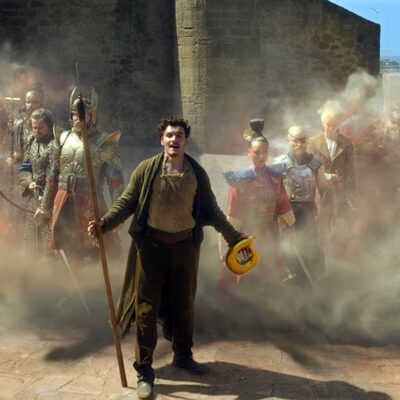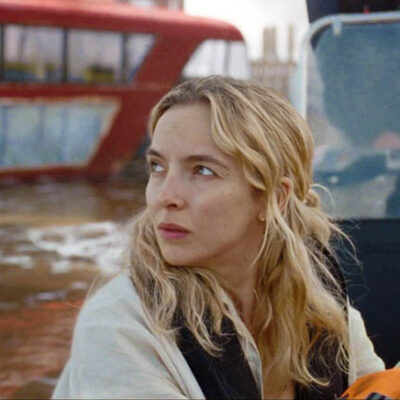The Expanse of Special Effects
A member of The Expanse production team from day one is Special Effects Coordinator Tim Barraball. “Since we’ve been doing The Expanse for so many years, there is a real family feeling to the show that makes making it that much more enjoyable. There are a few more things that visual effects do now than we did in the past, like floating objects. I made a passionate speech early on in a Season 5 meeting about actor interaction because they didn’t want to do squibs.”
The zero-gravity scenes utilize the expertise of stunts and special effects. “What I created at the beginning of Season 2 was a big teeter-totter gimbal that has several different attachments on one end,” explains Barraball. “You can sit or stand or hang from it. It’s counterweighted on the back and can go on a track and pivot around. Adam Savage was famously on it as a dead spaceman at the end of Season 2.”
A cold, wet and muddy quarry doubled for the planet of Ilus. “When the dust storm first hits, James Holden (Steven Strait) and another character turn around as the whole room explodes inwards,” remarks Barraball. “We did some huge air canons outside the set full of dirt and dust, breakaway glass in the windows, and had all of the set pieces inside on little jerk rams. Everything went at once. Stunt guys were in there. For the tsunami, we built the set inside of an on-set pool. We fired off these water cannons and dump tanks. It was quite the deluge. Steven Strait was in the scene getting nailed by this water.
“For Season 4, we built these moon buggies that drove around on Ilus,” explains Barraball. “We stripped down regular golf carts, did some conceptual art and completely rebuilt them. That took several months.” A space shuttle crashes on Ilus. “We had a lot of spot fires all over the crash scene. Burning piles of steel. There were 20 to 30 characters strewn everywhere impaled by pieces of metal. It was a challenge keeping them safe, yet still create a sense of peril. I had a great team, and it really does look like hell on Earth.”
“For Season 4, we built these moon buggies that drove around on Ilus. We stripped down regular golf carts, did some conceptual art and completely rebuilt them. That took several months. We had a lot of spot fires all over the [space shuttle] crash scene [on Ilus]. Burning piles of steel. There were 20 to 30 characters strewn everywhere impaled by pieces of metal. It was a challenge keeping them safe, yet still create a sense of peril. I had a great team, and it really does look like hell on Earth.”
—Tim Barraball, Special Effects Coordinator























